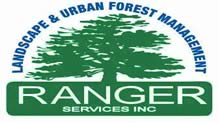Is it O.K. to “top” my tree?
No. This is an extremely damaging practice. Topping refers to the cutting back of tree branches to stubs. The most common reason given for topping is to reduce the size of the tree. Some people feel that tall trees pose a hazard, when in fact topping will make a tree more hazardous over the long term. The tree becomes more hazardous because the stubbed ends will allow decay into the tree and the sprouts that eventually take over are not real branches and are weakly attached. This combination creates a situation down the road that encourages tear outs of limbs. Topping also robs the tree of its ability to conduct photosynthesis. In short, topping kills trees far earlier than their normal life expectancy.
How do I mulch my trees and shrubs?
-Spread wood chips to a depth of 2-4 inches and as wide as the tree drip line if possible. If mulching to the ends of the branches is not feasible or desirable, at least mulch a 10 inch radius for every one inch of trunk diameter. Tree roots grow outward just below the soil surface, so the further out you can mulch the better.
Keep mulch from direct contact with the tree’s trunk. Piling the mulch on trunk wood can cause decay and disease problems. The picture below depicts a “mulch volcano”.
 This is a perfect example of the wrong way to mulch trees.
This is a perfect example of the wrong way to mulch trees.
Mulch can enhance the growth of trees-young and old alike. A layer of wood chips around the base of a tree can conserve moisture, improve aeration, and add nutrients back into the soil. Mulching also reduces competing grasses and protects the trunk from mower and string trimmer damage. Mulch recreates the forest floor, and the forest is where most of our trees genetically come from.
How do I water my trees and shrubs?
A new tree or shrub may need ½ to 1 inch of water per week to ensure establishment. Water as follows.
- Place garden hose at the base of the plant.
- Turn water on to a slow trickle.
- Allow water to soak into the soil for 10 minutes (deep, slow watering is best).
- Move hose around shrub to ensure uniform watering on all sides.
- Place garden hose 1 to 3 feet from trunk of tree.
- Turn water on to a slow trickle.
- Allow water to soak into soil for 10-20 minutes.
- Move hose around tree to ensure uniform watering on all sides. Whenever possible apply water to the entire area below the crown of the tree.
- Water new plants once per week. Over watering can lead to stress or possible death of plants. If we receive ½ to 1 inch of rain in a week, watering should not be needed for another 7-10 days.
- Water plants for the first complete growing season (May-October) to ensure proper plant establishment. If the soil is damp 6-8 inches below the surface, watering is not needed.
How do I plant a tree or shrub?
This may sound easy, but there are key steps when planting a tree that can make a huge difference down the road. A common misconception is that the roots of a tree are a mirror image of the top of that tree. This couldn’t be farther from the truth. Feeder roots need air and water in the right ratios. This proper ratio exists within the first foot of the soil horizon. Depending on the type of soil, it can be less than a foot but rarely more than 18 inches (anchoring roots can be found deeper). These feeder roots in the future can extend from the trunk out to at least three times the height of the tree.
- Identify the trunk flare of the tree or shrub to be planted. The trunk flare is where the roots spread at the base of the tree. This area should be partially visible after the tree has been planted. You may have to remove some soil from the top of the root ball to find the root flare.
- Dig a shallow, wide planting hole only as deep as the root ball. Breaking up the soil in a large area around the tree provides the tender feeder roots room to expand and ease establishment.
- Remove any burlap, metal basket, container, or twine to prevent girdling.
- Place the tree at the proper height.
- Straighten the tree and backfill the hole gently but firmly. Add a few inches of soil at a time and settle with water. It is not recommended to apply fertilizer at the time of planting.
- Stake the tree if necessary. Remove the staking and ties after the first year of growth.
- Mulch the tree. Follow the above instructions regarding mulching and watering.
